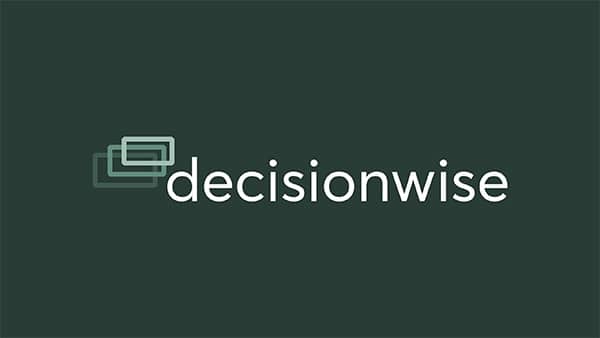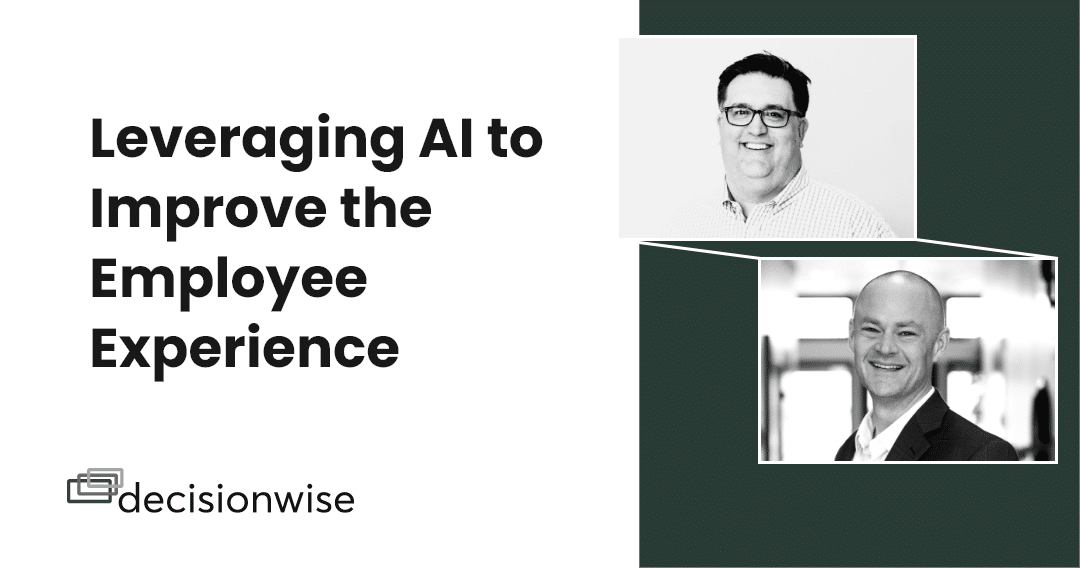
Abstract
Winning organizations are a direct result of the talented individuals that make up the organization. Thus, the employee experience (EX) has become a critical focus for organizations seeking to attract, retain, and engage top talent. Measuring and understanding an organization’s EX helps identify areas for improvement and drive positive change.
Now, enter Artificial Intelligence (AI), promising to revolutionize how we use data to understand our employees’ attitudes, perceptions, and beliefs. This white paper offers HR leaders and professionals a comprehensive overview of the advantages and disadvantages associated with the utilization of AI in measuring and analyzing the employee experience inside organizations. By examining the potential benefits and drawbacks, HR professionals can make informed decisions about how and when to integrate AI technologies into their day-to-day operations, all with an eye towards building employee engagement, satisfaction, performance, and productivity.
But the question remains: Can AI truly live up to the hype?
Introduction
As the workplace landscape evolves, organizations are increasingly turning to AI-driven solutions to streamline a variety of business processes, including those that belong to HR. From recruitment and onboarding to performance management and retention, AI offers powerful tools for collecting, analyzing, and interpreting vast amounts of data. However, with these capabilities come various considerations and challenges that HR leaders must carefully evaluate.
Pros of Using AI in Managing the Employee Experience
- Enhanced Data Accuracy and Insights; Pattern Recognition: AI algorithms can analyze large datasets with greater speed and accuracy than human counterparts. In addition, AI excels at spotting subtle trends, patterns, and correlations that humans might miss. While humans are evolutionarily-wired to find patterns, we do not see all possible patterns due to our many biases and heuristics. AI can fill in these missing gaps.In addition, organizations emit vast amounts of what we might call “data exhaust.” This includes unstructured data such as meeting frequencies, average number of emails sent in a day, PTO usage, and other information that can exported from typical business applications (such as Outlook). When AI is applied to this type of unstructured data, it can uncover hidden factors influencing employee sentiment, engagement, and productivity. For example, AI might be able to predict lower morale and motivation if it sees that a leader is constantly in meetings.AI will also change the way we explore data. Instead of relying exclusively on charts and graphs, along with the many corresponding filters used to cut and slice the data, managers will eventually be able to use generative AI to ask simple questions like, “Where is my team struggling the most?” No longer will there be a need to find one’s place in the hierarchy and then pour through pie charts and histograms.
- Personalized Employee Experiences: AI enables organizations to personalize the employee experience based on individual preferences, behaviors, and performance metrics/reviews. For example, by leveraging AI-driven recommendation engines and predictive analytics, HR leaders can deliver targeted learning and development opportunities, career pathways, and rewards and recognition programs tailored to each employee’s unique needs and aspirations.
- Improved Recruitment and Talent Management: AI-powered recruitment platforms leverage machine learning algorithms to analyze resumes, assess candidate fit, and predict job performance. By automating time-consuming tasks such as resume screening and candidate matching, HR teams can streamline the recruitment process, reduce bias, and identify top talent more efficiently.Additionally, AI-driven talent management systems can help organizations identify high-potential employees, assess succession readiness, and optimize workforce planning strategies.
- Scalability and automation: As noted above, AI is useful in automating data collection and analysis. AI can be used to gather, clean, and normalize datasets, which is often the most time consuming and tedious part of data analytics. To illustrate, AI can take a recruitment application (mentioned above) and automatically gather data from all the resumes and applications to see if there are patterns in the type of individuals that are applying for jobs or patterns in those persons that successfully move up the ladder inside an organization.
- Proactive Risk Mitigation: AI-driven sentiment analysis tools can monitor employee communication channels, such as emails, chat transcripts, and social media posts, to detect early warning signs of potential issues such as employee dissatisfaction, burnout, or disengagement. By proactively identifying and addressing these concerns, organizations can mitigate risks related to turnover, absenteeism, and productivity loss, fostering a healthier and more resilient workplace culture.
- 24/7 insights: AI-powered tools can analyze data continuously, providing real-time insights into employee sentiment and potential issues, enabling faster responses and resolutions.
Cons of Using AI in Managing the Employee Experience
- Privacy and Ethical Concerns: The use of AI in employee monitoring and surveillance raises significant privacy and ethical concerns. Employers must strike a balance between leveraging AI for legitimate business purposes and respecting employees’ rights to privacy and autonomy. Transparency, consent, and data protection measures are essential to mitigate the risk of unintended consequences, such as employee distrust, morale issues, and legal liabilities.
- Algorithmic Bias and Fairness Issues: AI algorithms are susceptible to bias inherent in the data used to train them, leading to potential disparities and unfair treatment in decision-making processes. Biased algorithms may perpetuate inequalities based on factors such as gender, race, age, or socioeconomic background, resulting in discrimination and exclusionary practices. For example, one of the most successful AI applications in healthcare is one used for skin cancer.1 The only downside is that it does not work well with people of color. This is because the AI model was primarily trained using photographs of white people.Thus, the challenge is that HR leaders must implement robust safeguards, such as algorithmic auditing and bias mitigation techniques, to ensure fairness and equity in AI-driven HR systems and practices.
- Lack of Human Connection: While AI can automate routine tasks and optimize processes, it cannot replace the human touch and empathy essential for building strong interpersonal relationships and fostering a supportive work environment. Over-reliance on AI in HR may lead to a loss of human connection and emotional intelligence, diminishing employee trust, engagement, and satisfaction. HR leaders should prioritize human-centered approaches that complement AI technologies with personalized interactions and genuine care for employees’ well-being.
- Overreliance on Technology: Dependence on AI technologies may lead to complacency and a lack of critical thinking among HR professionals. Relying solely on AI-driven insights without human interpretation and judgment can result in misinterpretation of data, flawed decision-making, and missed opportunities for innovation and creativity. HR leaders should view AI as a tool to augment human capabilities rather than a substitute for human expertise, encouraging continuous learning and development to stay agile in a rapidly evolving digital landscape.
- Explainability and interpretability: Understanding how AI-powered tools arrive at their conclusions can be challenging. Lack of transparency can erode trust and hinder employee buy-in to recommended actions. Even though AI may be able to immediately tell a manager the factors impacting their team, so much learning and understanding takes place when managers are forced to find those insights themselves by cutting and slicing the data.
Integrating AI with Human Expertise
AI offers immense potential for advancing EX measurement and understanding. However, its successful implementation requires a balanced approach. AI is great at telling us the “what.” Humans still have, and must keep, a vital role in explaining the “so what.” For example, AI cannot process emotions, therefore only humans can overlay data on top of an emotional, interpersonal landscape to understand how recommendations, insights, or ideas will be received and adopted by humans inside an organization.
To that end:
- Prioritize transparency and fairness: Ensure informed consent for data collection and explain how AI is used. Regularly audit algorithms for bias and implement countermeasures. AI thought and decisions should never trump or replace human thought or human-made decisions!
- Focus on human-AI collaboration: Use AI to gain insights but leave decision-making and action planning to humans. Always combine quantitative data with qualitative methods for a holistic understanding.
- Invest in employee education: Educate employees about how AI is used in all aspects of the HR function, including EX measurement and analysis. Address concerns openly and foster trust in the process.
Conclusion
The adoption of AI in measuring and analyzing the employee experience presents both opportunities and challenges for HR leaders. By leveraging AI technologies effectively, organizations can gain deeper insights, enhance decision-making, and personalize employee experiences to drive engagement and productivity. However, HR professionals must remain vigilant to mitigate potential risks related to privacy, bias, human connection, and overreliance on technology. By striking a balance between innovation and ethics, HR leaders can harness the power of AI to create a workplace culture that fosters trust, inclusion, and employee well-being.
References and Sources:
- Bersin, J. (2020). Artificial Intelligence in Human Resources. Deloitte.
- Davenport, T. H., & Harris, J. (2019). Competing on Talent Analytics: The New Science of Winning. Harvard Business Review Press.
- Society for Human Resource Management (SHRM). (2021). Using Artificial Intelligence in HR: What HR Professionals Need to Know. SHRM.



